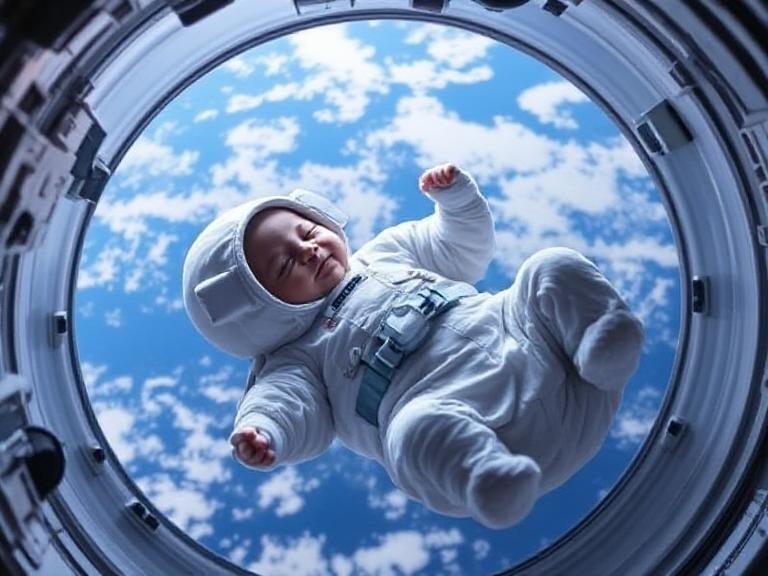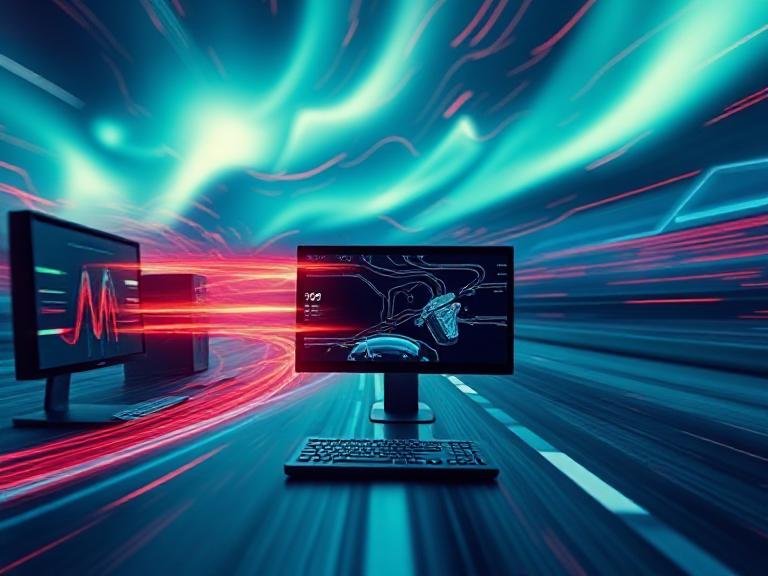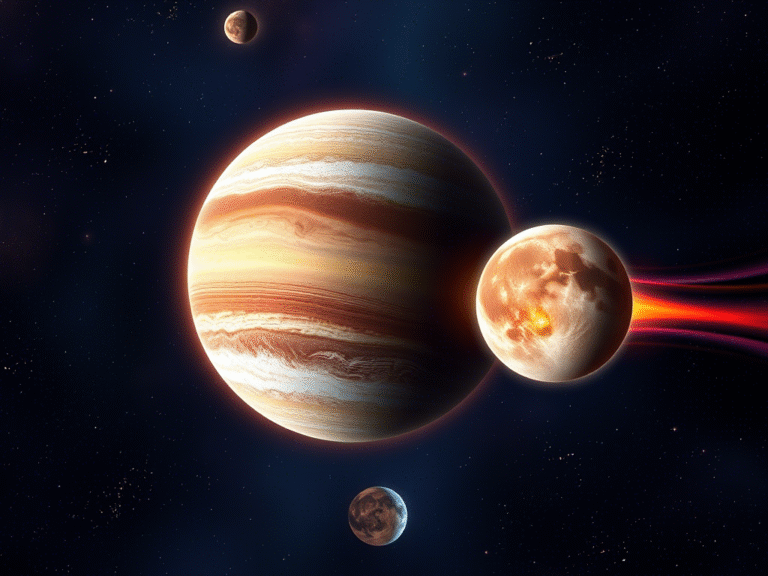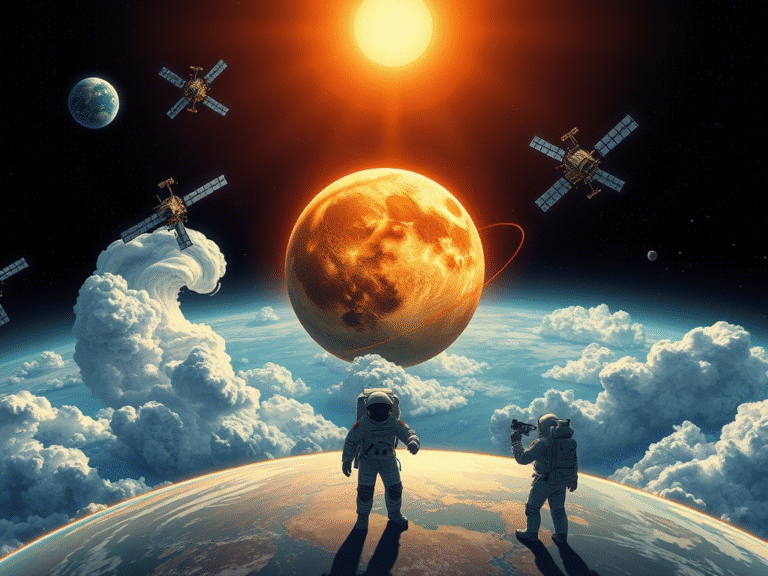
The Challenge of Space Pregnancy: What Scientists Know About Birth Beyond Earth
As missions to Mars move closer to reality, scientists are increasingly concerned about how the human body might respond to the extreme conditions of space travel. A round trip to the red planet would provide ample time for pregnancy to occur and potentially result in childbirth far from Earth.
Could Space Pregnancy Be Safe?
But could conception actually take place and progress normally in the vacuum of space? And what would be the fate of a child born millions of miles from home?
Most people rarely consider the biological challenges we overcome simply by being born. Approximately two-thirds of human embryos never survive to birth, with the majority of these losses occurring within the first few weeks after fertilization – often before a person even realizes they’re pregnant.
Understanding Early Pregnancy Loss
These early, often unnoticed miscarriages typically occur when an embryo fails to develop properly or cannot successfully implant in the uterine wall.
Pregnancy functions like a sequence of biological checkpoints, each requiring precise timing and carrying its own probability of success. On Earth, these odds can be calculated through clinical research and biological modeling. My recent research examines how these same developmental stages might be affected by the harsh environment of interplanetary space.
The Gravity Challenge
Microgravity, the near-weightless condition experienced during spaceflight, would make conception physically awkward but likely wouldn’t significantly interfere with maintaining pregnancy once implantation has occurred.
However, the actual birthing process and newborn care would become enormously complicated in zero gravity. In space, nothing remains stationary. Fluids drift freely, as do people. This makes delivering a baby and providing care a far messier and more complex undertaking than on Earth, where gravity assists with everything from proper positioning to feeding.
Interestingly, the developing fetus already exists in a microgravity-like environment. It floats in the neutrally buoyant amniotic fluid within the womb, cushioned and suspended. Astronauts actually train for spacewalks in water tanks specifically designed to simulate weightlessness. In this respect, the womb naturally functions as a microgravity simulator.
The Radiation Threat
But gravity represents only one aspect of the challenge.
Beyond Earth’s protective barriers lies a more serious danger: cosmic radiation. These are high-energy particles – essentially “stripped-down” atomic nuclei – that travel through space at nearly light speed. They consist of atoms that have lost all their electrons, leaving only the dense core of protons and neutrons. When these bare nuclei collide with human tissue, they can cause severe cellular damage.
Earth’s Natural Protection
Here on Earth, we’re shielded from most cosmic radiation by the planet’s thick atmosphere and, depending on the time of day, tens of thousands to millions of miles of protection from Earth’s magnetic field. In space, this natural shielding vanishes entirely.
Cellular Damage Mechanisms
When a cosmic ray penetrates the human body, it may strike an atom, strip away its electrons, and smash into its nucleus, ejecting protons and neutrons and creating a different element or isotope.
This can cause extremely localized damage – meaning individual cells or parts of cells are destroyed while the rest of the body remains unaffected. Sometimes the ray passes completely through without hitting anything. But if it strikes DNA, it can cause mutations that increase cancer risk.
Even when cells survive, radiation can trigger inflammatory responses. This means the immune system overreacts, releasing chemicals that can damage healthy tissue and disrupt organ function.
Early Pregnancy Vulnerability
During the first few weeks of pregnancy, embryonic cells are rapidly dividing, migrating, and forming early tissues and structures. For development to continue, the embryo must remain viable throughout this delicate process. The first month after fertilization represents the most vulnerable period.
A single strike from a high-energy cosmic ray at this stage could be fatal to the embryo. However, the embryo is extremely small – and while cosmic rays are dangerous, they’re relatively rare. Therefore, a direct hit is unlikely. If it did occur, it would probably result in an unnoticed miscarriage.
Evolving Pregnancy Risks
As pregnancy advances, the risks change. Once the placental circulation system – the blood flow network connecting mother and fetus – is fully established by the end of the first trimester, the fetus and uterus grow rapidly.
This growth creates a larger target. A cosmic ray is now more likely to hit the uterine muscle, which could trigger contractions and potentially cause premature labor. And although neonatal intensive care has improved dramatically, the earlier a baby is born, the higher the risk of complications, especially in space.
Magnified Risks in Space
On Earth, pregnancy and childbirth already carry inherent risks. In space, these risks become significantly greater – but not necessarily impossible to overcome.
Post-Birth Development Challenges
Development doesn’t end at birth. A baby born in space would continue growing in microgravity, which could interfere with postural reflexes and coordination. These are the instincts that help a baby learn to lift its head, sit up, crawl, and eventually walk – all movements that depend on gravity. Without that sense of “up” and “down,” these abilities might develop in very different ways.
The radiation risk also continues after birth. A baby’s brain continues developing after delivery, and prolonged exposure to cosmic rays could cause permanent damage – potentially affecting cognition, memory, behavior, and long-term health.
The Verdict on Space Birth
In theory, yes, a baby could be born in space. But until we can protect embryos from radiation, prevent premature birth, and ensure babies can develop safely in microgravity, space pregnancy remains a high-risk experiment – one we’re not yet prepared to attempt.
Arun Vivian Holden, Emeritus Professor of Computational Biology, University of Leeds





